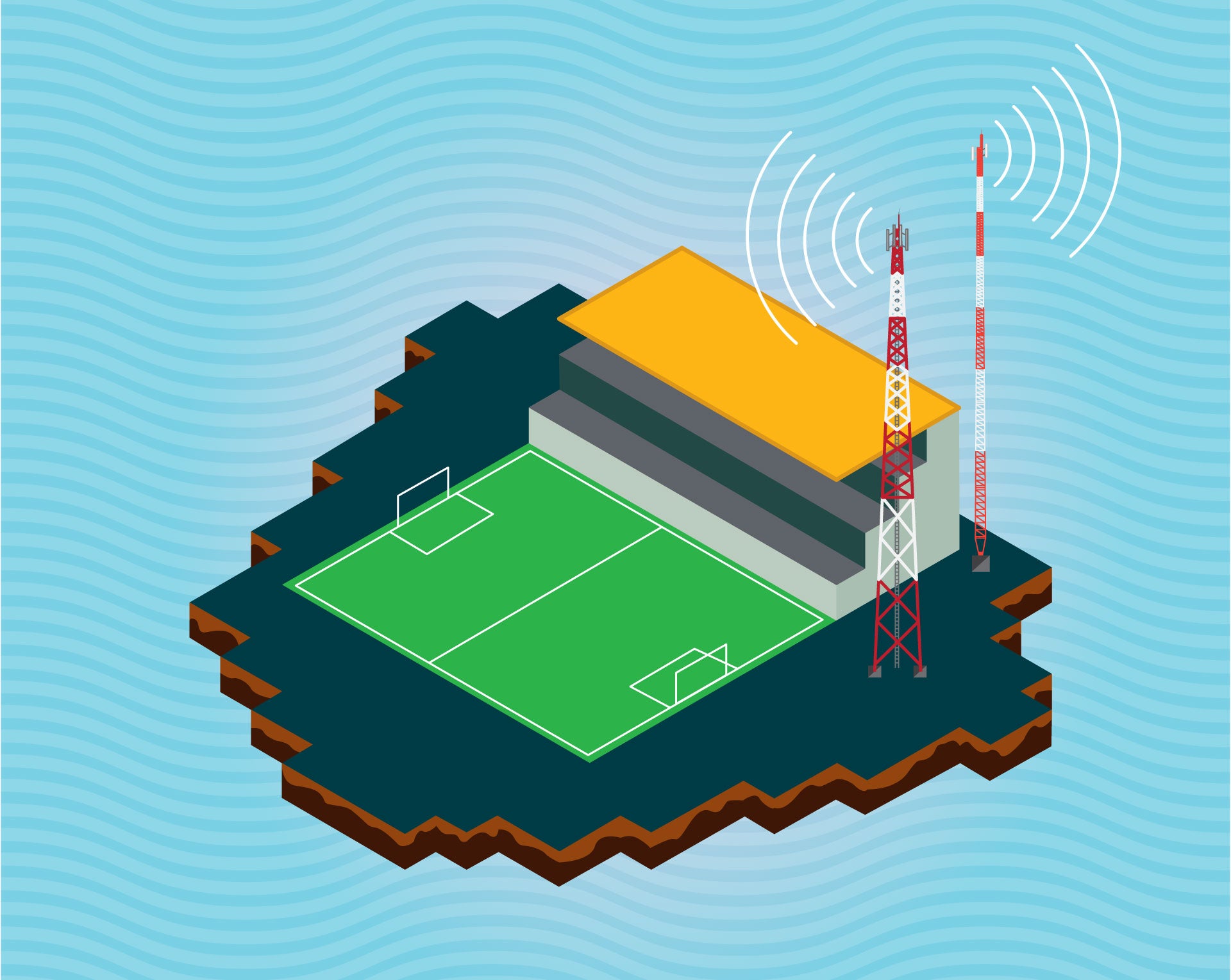
Despite all the fanfare and hype, it’s fair to say that 5G hasn’t yet revolutionised consumers’ lives. While things like increased capacity, decreased latency, and network slicing don’t sound particularly sexy, they have the potential to do so much for end-users, both humans and machines.
Interestingly, one area where 5G has the potential to be a game-changer is football. Fans are such a valuable asset for clubs that serious money is being spent to improve the matchday experience.
In fact, several high profile partnerships between mobile network operators and football clubs have already formed to bring the benefits of 5G to fans for an improved quality of fandom experience.
The football stadium experience has come a long way from soggy terraces and half-time meat pies, as it becomes enhanced by data-driven functionality and fan engagement. It is now common for fans to check on other match results and talk about this during the game they’re simultaneously watching live, particularly during top of the table clashes and relegation battles towards the end of the year.
Augmenting the matchday experience
Tottenham Hotspur took this even further with its recently completed stadium. It has been designed with what it described as “technology incorporated into the fabric of the building to enhance the fan experience” offering 1,600 wireless access points that “allows 65% of matchday attendees to simultaneously stream live video.”
Whether a club owns the latest digital stadium or a decades-old ramshackle building, clubs want their fans to spend more time, and money, while onsite. This is where technology needs to augment the experience from when they purchase a ticket to when they sit down, to make it as seamless and connected as possible.
How well do you really know your competitors?
Access the most comprehensive Company Profiles on the market, powered by GlobalData. Save hours of research. Gain competitive edge.

Thank you!
Your download email will arrive shortly
Not ready to buy yet? Download a free sample
We are confident about the unique quality of our Company Profiles. However, we want you to make the most beneficial decision for your business, so we offer a free sample that you can download by submitting the below form
By GlobalDataAs with other events and retail experiences, ticketing, security, and electric turnstiles, as well as interactive high-definition video screens, WiFi, and mobile engagement all add to a more connected fan experience.
Another connectivity challenge is with the evolving nature of refereeing. Whatever people’s opinions on the Video Assistant Referee (VAR), to be a success it needs to balance accuracy with minimising the impact on flow. To achieve this the fourth official needs to have access to footage in real-time from multiple angles, as well as having a constant, uninterruptable communication line with the referee. For major tournaments this isn’t a challenge; however, it becomes more difficult to replicate further down the football pyramid.
5G and football: Latency, fibre-optics and network slicing
All of these connectivity challenges are being addressed with a combination of private and public networks, generally over fibre and 4G. However, as we’ve seen in many other areas, particularly video streaming and gaming, consistent access to desired network performance is becoming increasingly rare. 5G promises to deliver what 4G can no longer offer: higher capacity and lower latency.
5G isn’t just about the Radio Access Network (RAN). In fact, the next generation of mobile networks will need a lot of help from wireline technologies to deliver on its promises. The reality is that wireless only makes up a small portion of the data journey. The rest of this path is primarily a fibre-optic transport network. With 5G promising data rates as much as 100 times faster than what’s currently available, the wireline infrastructure interconnecting end-users (humans and machines) to accessed content residing in data centres, must be ready to support upwards of 1,000 times more data flowing across it.
With 5G, dedicated network performance, including metrics as capacity and latency, can be achieved through Network Slicing, which allows operators to manage multiple virtual networks over a common physical network infrastructure.
Technically speaking, it enables virtual partitioning of the Radio Access Network (RAN), core network components of the 5G Core, and packet-optical transport network all the way to the data centres, and everything in between. This means that if a big game is coming up, the football club can dedicate a part of the network to just handle data for VAR, or once the game has finished it can put everything onto its fan network to keep them in the stadium.
The future of football and tech
Looking ahead, it’s difficult to predict what the future will hold for football fans and how technology will play a role. We may see the resurgence of a 90s favourite in Player Cam using wearable technology to see the game from the perspective of your favourite player or even the referee.
We often see club owners bow to fan pressure when hiring and firing managers – will this go even further to a point where fans will make substitutions and tactical decisions from their smartphones in the stadium? Whatever happens, recent trends point towards even more network heavy features.
For now, 5G is set to enable and support increased fan engagement in stadiums, moving towards a more seamless and connected experience that takes football away from the surrounding pubs and streets and into the stadium where it arguably belongs. There’s a strong argument to suggest that 5G-driven experiences will take football closer to the “day-out” culture seen with American sports as entertainment, engagement, and activities become more important to fans, and owners.
Whatever we’ll see going forward, it’s clear that 5G will better immerse fans into the beautiful game.
Read more: Isles of Scilly Football League to become world’s first 5G-connected league



